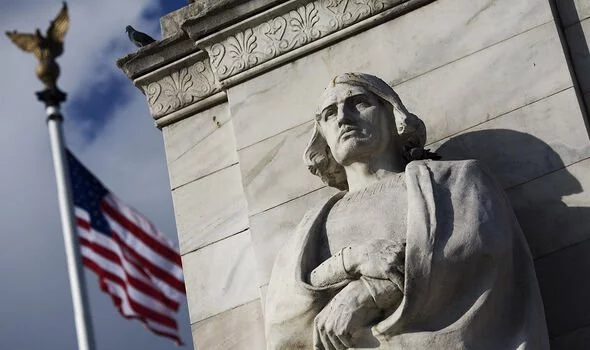Archaeology breakthrough as Christopher Columbus’ first tomb found: ‘We got it!’
The burial site of Columbus has been a mystery for some time. He was initially left to rest in Valladolid, a city in northwest Spain, three years after his death in 1506. However, the exact location of this first tomb has never been confirmed, until now.
After being buried in Valladolid, Columbus’ remains were taken to his family mausoleum in the southern city of Seville and were moved several more times over the following centuries before returning to Seville in 1898.
In 1544 his remains were moved from Seville to Santo Domingo, which is the capital of the Dominican Republic, in accordance with the instructions he had left behind.
In 1795 his bones were moved to Havana before being shipped back across the Atlantic and returned to Seville in 1898.
In 2005, researchers from the University of Granada used DNA samples to confirm that it was in fact Columbus’ remains that were left in the Seville tomb.
Researchers have now determined that he was first buried in the San Francisco convent in Valladolid which no longer exists.
This was revealed in a study by Spain’s Naval Museum.


The site is currently a commercial zone near the spacious Plaza Mayor, a broad, pedestrianised expanse surrounded by arcaded buildings painted red.

The researchers’ statement follows “a detailed historical investigation, confirmed by ground-penetrating radars.”
Researchers used samples of lead, brick, and gold from the Seville burial report to find the match with the burial spot in Valladolid.
Marcial Castro, who led the research, said: “I was tasked with identifying the location where Columbus was buried from these threads of gold, silver, nails, lead, brick and to my surprise we got it.”

Historians and archeologists have since recreated in 3D the dimensions of the chapel in Valladolid that housed the remains of Columbus.
Christopher Columbus was an Italian explorer and navigator who completed four voyages across the Atlantic Ocean, opening the way for the widespread European exploration and colonisation of the Americas.
His expeditions, sponsored by the Catholic Monarchs of Spain, were the first European contact with the Caribbean, Central America, and South America.


But the navigator has also long been blamed for carrying the sexually transmitted infection syphilis from the Americas to Europe through his crewmen.
While the researchers in Spain are confident they have found the true burial spot, The Dominican Republic maintained that the navigator rests in the cathedral in Santo Domingo, in a coffin found in 1877 with the inscription “Christopher Columbus.”
This claim is made due to the fact that the bodies of the explorer and his son were transferred from the Iberian peninsula in 1523 to Hispaniola – a territory that is today divided between the Spanish-speaking Dominican Republic and the French-speaking Haiti – where Christopher Columbus wished to be buried.
